In western music theory it is very important to learn about the distance between two notes. We refer to the distance between notes as a musical interval. Two of the most common intervals in music are tones and semitones. Otherwise know as the whole step and half step. These two intervals have the shortest distance in music theory. Western music theory follows what we call equal temperament. Equal temperament balances out the frequencies creating twelve notes. Let’s look into this.
What is a Semitone (Half Step)?
A semitone interval or half step is the smallest interval in western music. It is easiest to see this interval on the piano. Take a look at the highlighted notes C and C#, white key to black key. Notice how there are no notes in-between these two notes

Have a look at another example. This time we have the notes B-C, both white keys but notice that there are no notes in-between.
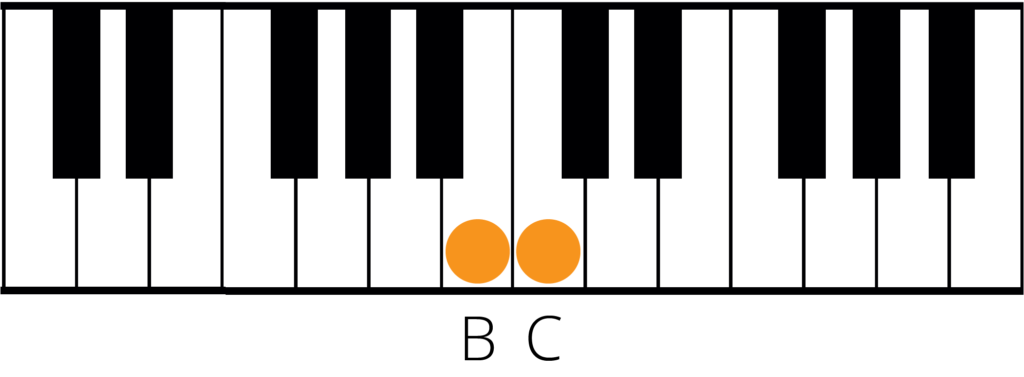
The Two Types of Semitones – Chromatic and diatonic semitones
There are two different types of semitones and these are called the chromatic and diatonic semitones.
These two different types of semitone are not the same as chromatic and diatonic scales.
Chromatic Semitones
Chromatic semitones are where we have two adjacent notes that have the same letter name (note name). In a chromatic scale it is common to use chromatic semitones as in a chromatic scale we use all twelve notes and this is not possible without using the same notes.
For example, C-C# and Bb-B. The second note is a semitone higher than the first note. Take a look at the notes on the musical staff and on the piano keyboard below.
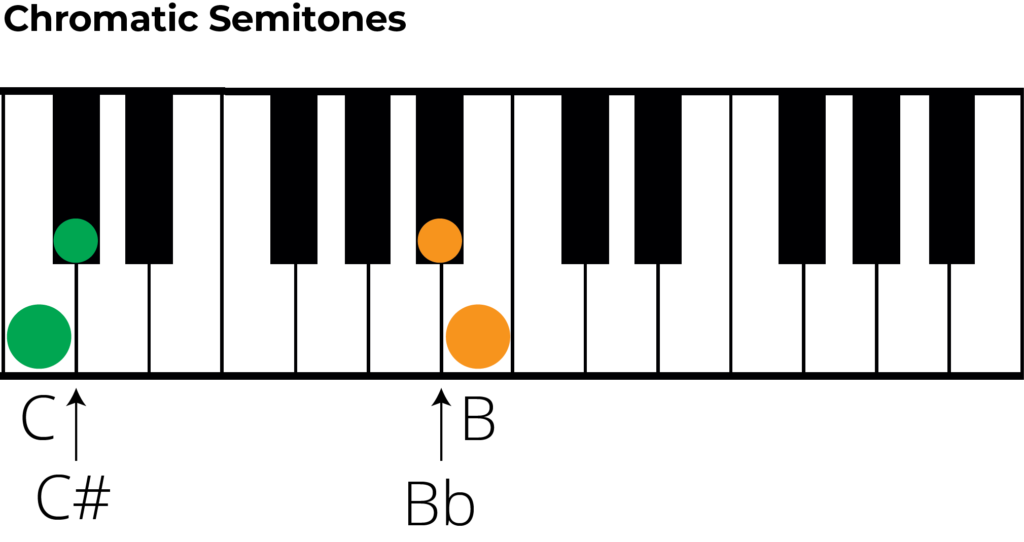
Diatonic Semitone
Diatonic semitones are where the two notes have different letter names. The word diatonic refers to being in a key and in a key you do not have more than one note name. A diatonic scale will consist only of letters in the musical alphabet with the occasional sharp or flat sign.
For example, C-Db and B-C. The second note in each of these examples is a semitone higher. Take a look at the musical staff and the piano keyboard below.

When playing these two different types of semitone on the piano keyboard they will both sound the same as they have the same distance. The difference comes in when the notes are written on the staff.
Alternative ways of labelling the intervals
As we have seen there are two different types of tones (whole steps) and semitones (half steps)- diatonic semitone and chromatic semitone.
These can be labelled in different ways.
Take the chromatic semitone interval C-C#. This can also be labelled an augmented unison. This is because both notes have the same note name but the second note is raised or augmented.
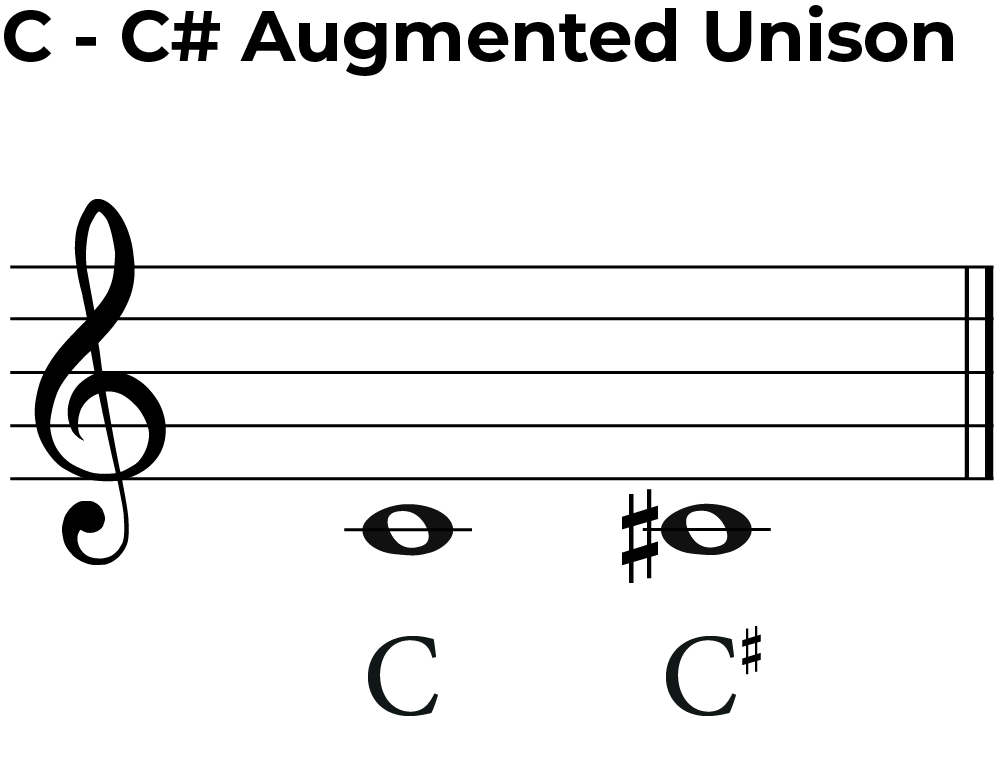
Take the diatonic semitone G-A flat. This can also be labelled a minor second. A second is an interval where the distance between two notes is a second, i.e. two notes. The minor second means that this higher note is a semitone lower.
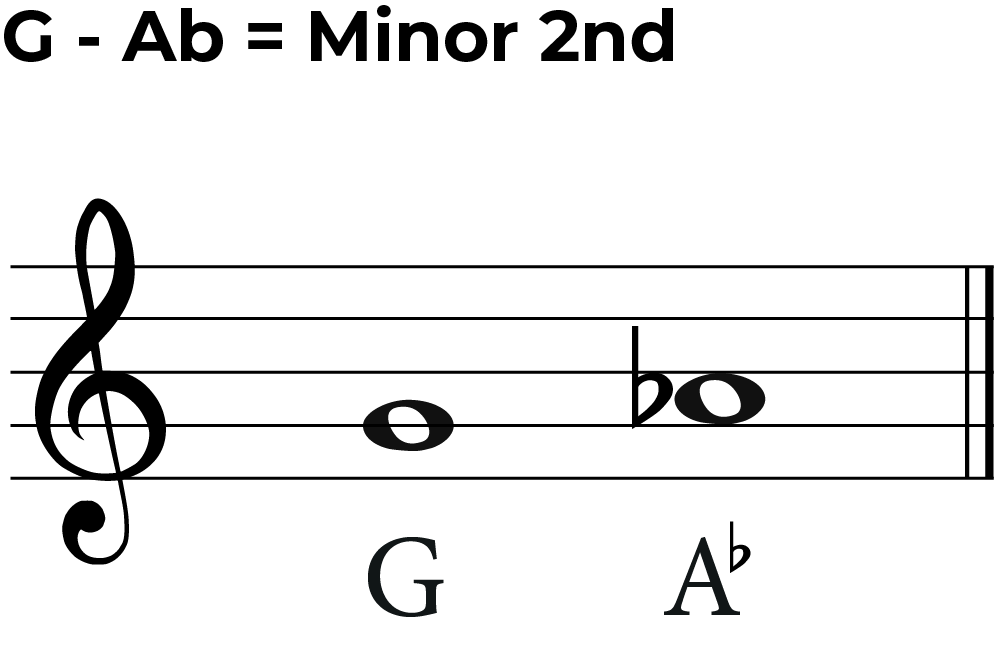
Enharmonic Equivalent Notes
In order to achieve chromatic and diatonic semitones (half steps) we sometimes have to use what we call enharmonic equivalent notes. You can read more about these here but briefly, an enharmonic equivalent note is one that sounds the same but is spelled differently.
C# and Db are two notes that are an example of enharmonic equivalents.
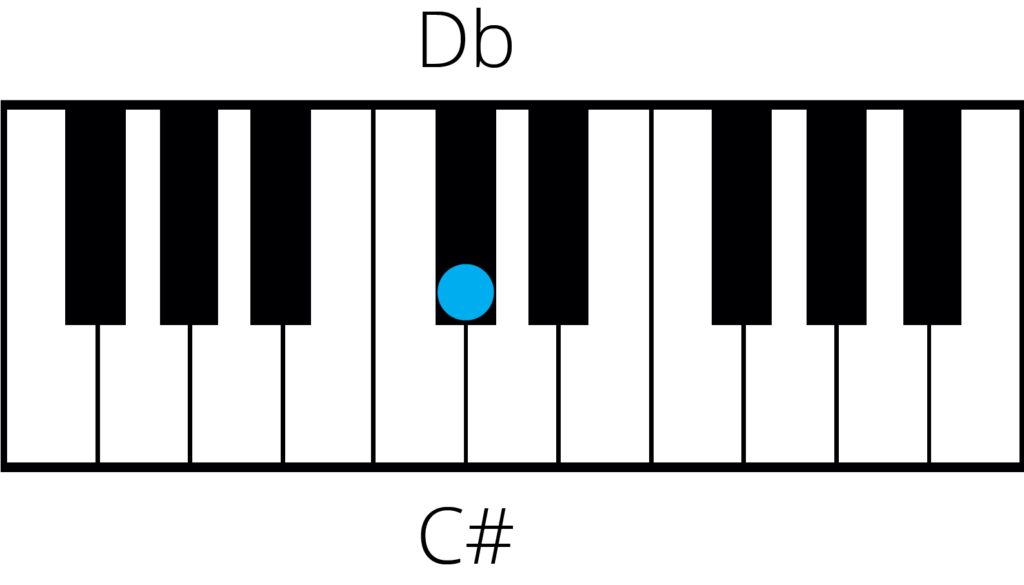
Enharmonic equivalents are used in both chromatic semitones and diatonic semitones.

What is a Tone (Whole Step)?
A whole tone or whole step is the next smallest interval after the semitone/half step.
A whole tone consists of two semitones or half steps. An example of a whole tone would be the two notes E – F sharp, A-B or G-A. Take a look at the piano keyboard below.
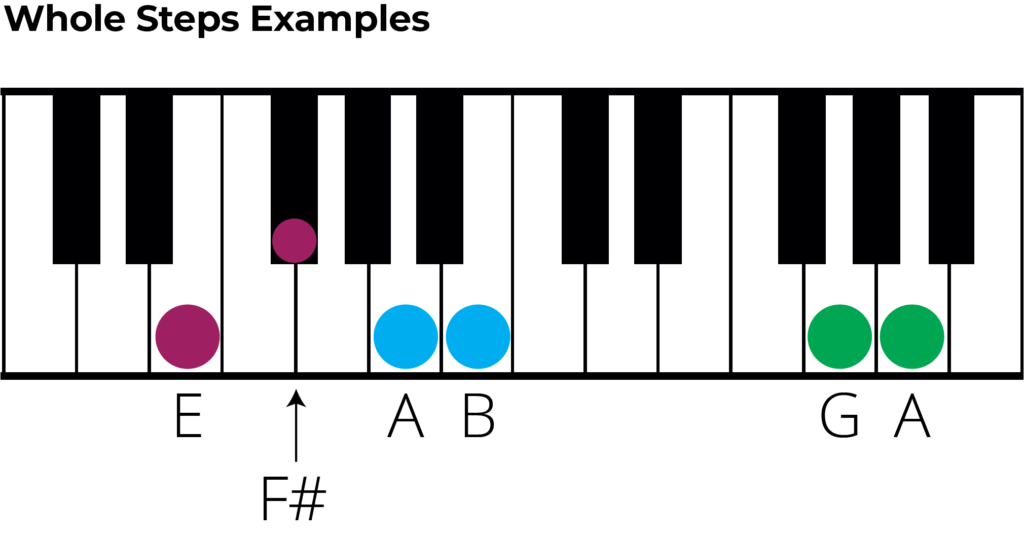
Tones and Semitones in a Major Scale
Every major and minor scale is made up of tones and semitones.
The major is made up of the tones and semitones:
T T S T T T S
Notice how the major scale includes two semitones and five whole tones. The distance between each note in a major scale will always be the same regardless of what pitch you start on.
Take a look at the C major scale on the piano keyboard and see if you can spot the semitones. The below example is one octave.
Both of these semitones are diatonic semitones and not chromatic semitones, as in a scale each note has to have different letter names.

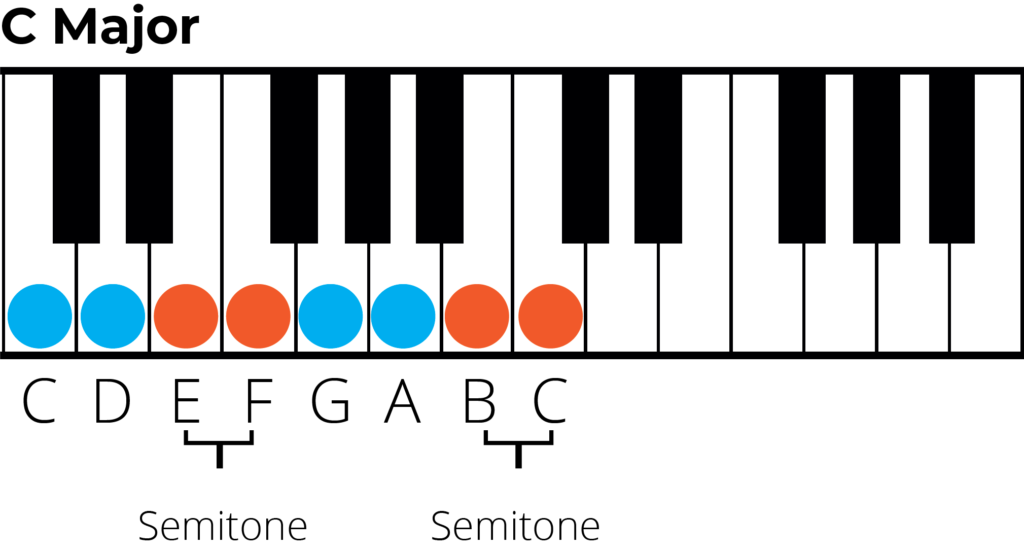
Tones and Semitones in Minor Scales
The natural minor scale is made up of the tones and semitones:
T S T T S T T
Notice how the minor scale includes two semitones and five whole tones as well but the difference is they are in a different order. As with the major scale, the distance between each note will stay the same for every natural minor scale, regardless of what pitch you start on.
Take a look at the a minor scale on the piano keyboard and see if you can spot the semitones. The below example is one octave.
As above, a minor scale also has to have each note as different letter names and so each semitone will be a diatonic semitone and not a chromatic semitone.
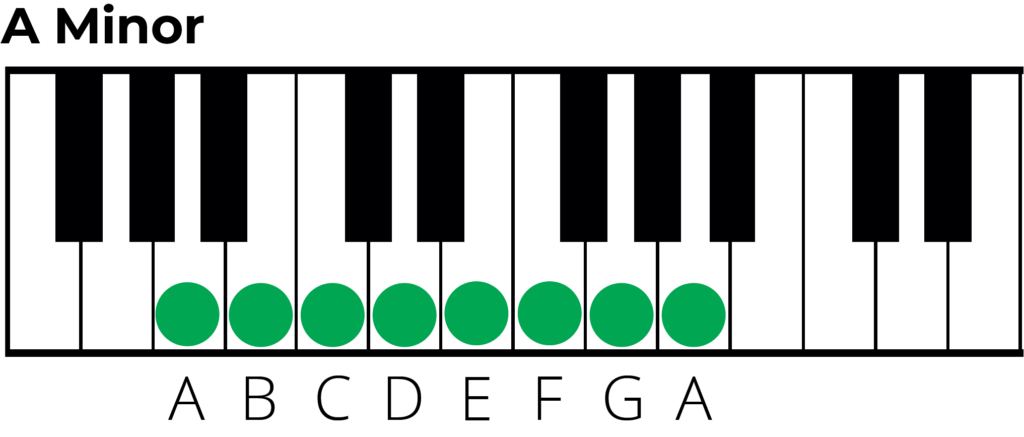
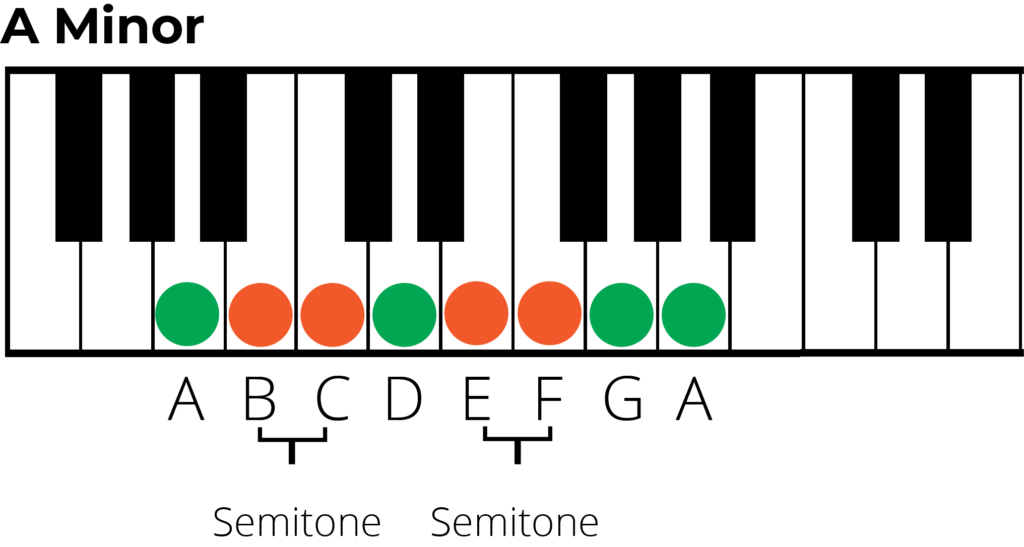
Remember to take into account the key signature of your major scale and minor scales as if you don’t you may miss some of the semitones!
List of Tones and Semitones (Whole Steps and Half Steps)
Take a look at our list of tones and semitones in music. Within this list we include the two types of semitones.
List of each semitone (half step) – diatonic semitone and chromatic semitone.
- C to C#/Db
- C#/Db to D
- D to D#/Eb
- D#/Eb to E
- E to F
- F to F#/Gb
- F#/Gb to G
- G to G#/Ab
- G#/Ab to A
- A to A#/Bb
- A#/Bb to B
- B to C
List of each whole tone (whole step)
- C to D
- C#/Db to D#/Eb
- D to E
- D#/Eb to F
- E to F#/Gb
- F to G
- F#/Gb to G#/Ab
- G to A
- G#/Ab to A#/Bb
- A to B
- A#/Bb to C
- B to C#/Db
Semitones and whole tones are a crucial part of music theory learning and it is important to learn all the notes that could be either chromatic or diatonic semitones or whole tones.
What’s next….?
- Learn about scales and key signatures.
- Learn more about accidentals: sharp sign, flat sign, double sharp sign, double flat sign.
